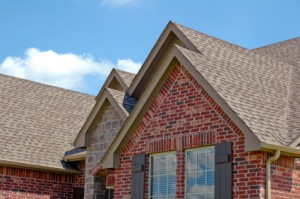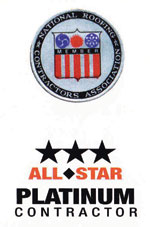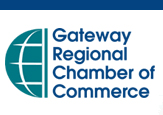Asphalt Roofing New Jersey
Commercial asphalt roofing shingles (sometimes referred to as composite shingles) were developed in the early 1900’s to provide a fire-resistant low-cost roofing product.
Roll roofing was the asphalt shingles predecessor, which was simply, long strips of asphalt-coated felt with a layer of finely crushed rock embedded in its surface. The earliest asphalt roofing shingles were cut from existing sheets of roll roofing and became popular through mail-order catalogs by the 1920’s.
By the 1970’s, fiberglass-based asphalt shingles were being manufactured, which further improved fire ratings. Also, laminated two-piece shingles were introduced to the market.
Today, asphalt-fiberglass shingles cover approximately 80 percent of the homes in the New Jersey, providing a low-cost, low-maintenance, light-weight, easily installed roof covering.
The ceramic-coated granules on a shingles surface provide for a wide variety of colors while also protecting the shingles core from the sun’s ultraviolet rays. They increase the shingles fire-resistant qualities, as well.
Most shingles now sold in the southeast have copper-coated granules embedded with the other color granules to inhibit algae growth. Algae growth is the cause of black streaks that can be observed on many homes where a humid climate is prevalent.
There are many different asphalt shingle varying in texture, size, color, dimension, and thickness. Three-tab shingles are the most common, usually about 36 inches long by 12 inches wide. Laminate two and three-piece shingles are increasing in popularity and usually provide and longer life-span and better wind resistance. Laminate shingles also come in designer shapes and textures to give your New Jersey home a customized appearance.
One of the newest innovations in asphalt shingles is reflective granules that can reduce roof temperatures by an average of 20 degrees Fahrenheit, resulting in lower energy consumption and costs.





























